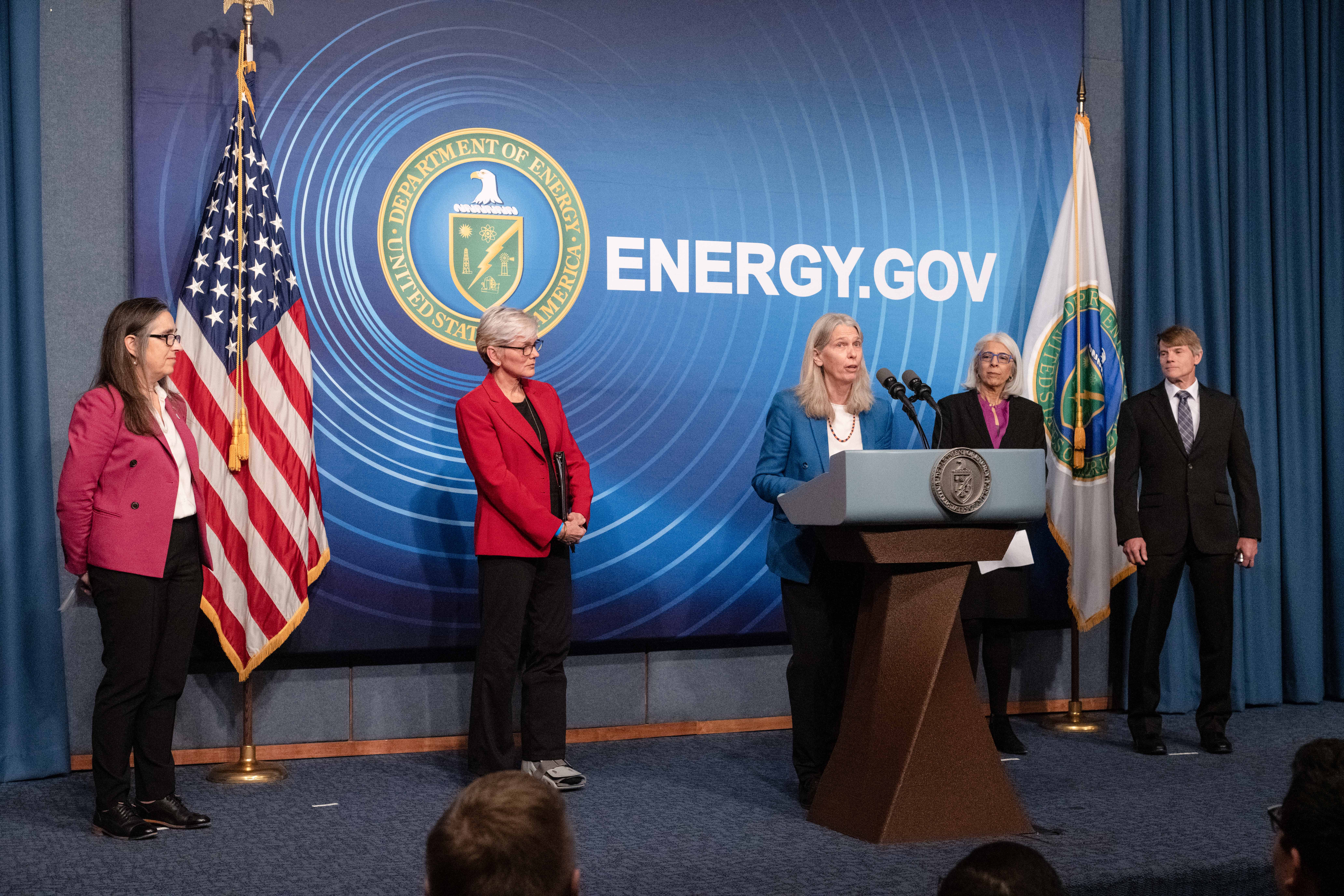While the rafters are ringing with praise for the nuclear fusion breakthrough at Lawrence Livermore National Laboratory, let me inject a sour note. This isn’t the beginning of cheap, safe, non-polluting electricity.
It is a scientific milestone, not an electricity one. Science tantalizes, but it also deceives. Often the mission turns out not to be the one for which years of scientific research were aiming.
I would remind the world that science stirred great hope — futilely — with the idea of superconductivity at ambient temperatures after some laboratory success.
The history of fusion is a clear illustration of expectation dashed, revived, resurrected and dashed again. Now there is some hope with a stunning lab success: the first future experiment with “gain,” meaning more energy came out of the experiment than went into it.
Fusion has been the goal, the light at the end of the tunnel, for nuclear researchers for more than 60 years. In that time, there have been false prophets, failed attempts, elaborate claims and just hard slog.
That hard slog has shown what is possible: more power has been achieved in a fusion experiment for a fraction of a second. That is a huge success, but it isn’t limitless electricity, as some have heralded.
Fission — which makes possible our power reactors and warships — is splitting the atom to release heat, which is converted, via steam, into electricity.
Fusion, beguiling fusion, seeks to do what happens in stars and the sun — fusing two atoms together to produce heat, which, in a reactor, would be used to create steam and turn turbines, making electricity.
Governments and researchers have salivated over the possibility of fusion for decades, and it has been well-funded worldwide compared with other energy sources.
Getting fusion temperatures at or above those on the sun must be achieved to fuse two deuterium atoms together. Deuterium, also called “heavy hydrogen,” is an isotope of hydrogen. If you can do that and sustain the reaction for months and years, you can design a reactor that would create steam, or use some other fluid, to turn a turbine.
There are two approaches scientists have used to get fusion. One is inertial fusion, used in the breakthrough at the National Ignition Facility at Lawrence Livermore National Laboratory, near San Francisco, which involves hitting a pellet with a concentrated beam of energy: The lab used 192 super-powerful lasers to get fusion.
In the early 1980s, I spent time at Livermore and watched an experiment to hit the target with big accelerators. There were, as I recall, eight of them the size of cars. The research scientist showing me the facility said that accelerators the size of locomotives were needed to continue the experiments.
The other approach to get fusion is the tokamak, a Russian word describing a doughnut-shaped machine where plasma is superheated with electricity, and the whole thing is held together in powerful magnetic fields. This is the technology being pursued internationally by a 35-nation consortium at the International Thermonuclear Experimental Reactor in Cadarache, southern France.
This tokamak, or toroidal approach, is the one most favored in the community to succeed eventually as a source of heat to make electricity.
Also, a lot of solid work on fusion has been done at the General Atomics facility in La Jolla, California, and at research facilities across the United States and worldwide. I visited the General Atomics site many times, crawled inside the machine, and wondered at the math and science that have gone into the pursuit of fusion.
Back in the 1970s, physicist Keeve “Kip” Siegel believed he could achieve fusion with simple, off-the-shelf optical lasers. He died of a stroke in March 1975 while testifying before the Joint Congressional Committee on Atomic Energy in defense of his laser fusion research.
Bob Guccione, founder and publisher of Penthouse, hooked up with a former member of Congress from Washington state, Mike McCormack, and together they sought to promote fusion.
Two eminent scientists, Stanley Pons and Martin Fleischmann, thought they had a breakthrough with so-called cold fusion. But this chemical process hasn’t panned out.
When I was looking at that fusion experiment at Livermore in the early 1980s, the researcher showed me a wonderful new way of communicating with other scientists around the world on his computer. I thought it was just a Telex on steroids and went back to questions about fusion, despite my guide’s enthusiasm for the new communications system.
It was the internet, and I missed the big story — as big as a story can get — to keep reporting on fusion. You can see why I may be soured.
Photo: During the Dec. 13 press conference announcing ignition, Department of Energy Under Secretary for Nuclear Security and Administrator of the National Nuclear Security Administration Jill Hruby said in achieving ignition, LLNL researchers have “opened a new chapter in NNSA’s science-based Stockpile Stewardship Program,” enabling scientists to modernize nuclear weapons and unlock new avenues of research in nuclear science.

 Follow
Follow
Leave a Reply